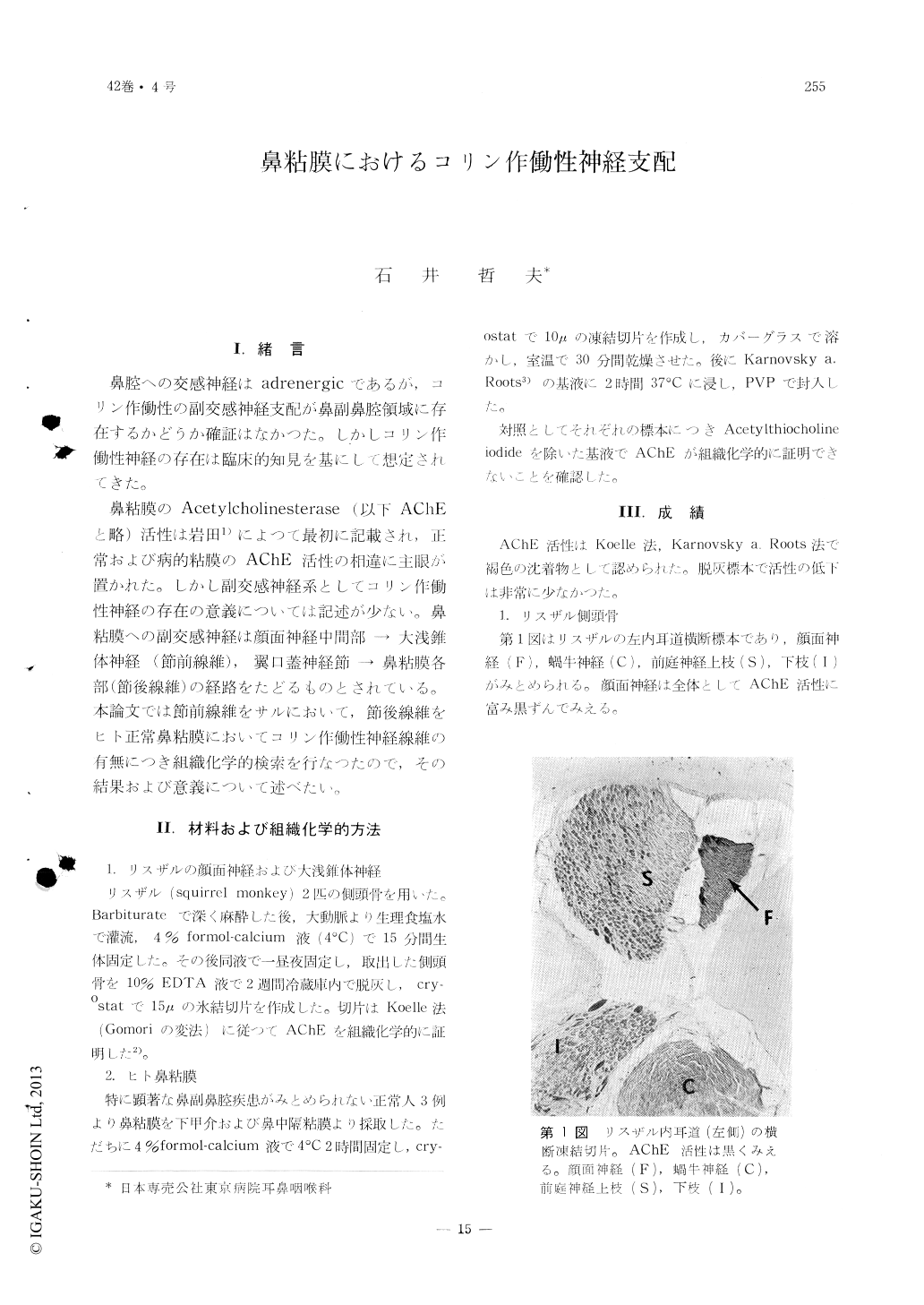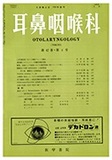Japanese
English
- 有料閲覧
- Abstract 文献概要
- 1ページ目 Look Inside
Ⅰ.緒言
鼻腔への交感神経はadrenergicであるが,コリン作働性の副交感神経支配が鼻副鼻腔領域に存在するかどうか確証はなかつた。しかしコリン作働性神経の存在は臨床的知見を基にして想定されてきた。
鼻粘膜のAcetylcholinesterase(以下AChEと略)活性は岩田1)によつて最初に記載され,正常および病的粘膜のAChE活性の相違に主眼が置かれた。しかし副交感神経系としてコリン作働性神経の存在の意義については記述が少ない。鼻粘膜への副交感神経は顔面神経中間部→大浅錐体神経(節前線維),翼口蓋神経節→鼻粘膜各部(節後線維)の経路をたどるものとされている。本論文では節前線維をサルにおいて,節後線維をヒト正常鼻粘膜においてコリン作働性神経線維の有無につき組織化学的検索を行なつたので,その結果および意義について述べたい。
The presence of acetylcholinesterase was demonstrated histochemically in the temporal bone of the squirrel monkey and the human nasal mucosa.
A rich supply of cholinergic nerve fibers was observed in the intermediate portion of the facial nerve and, also, in the greater superficial petrosal nerve in the monkey.
In the human nasal mucosa, cholinergic innervation was mostly seen around the arteries and arterioles while, very little was detected around the veins. These nerve fibers were richly distributed around the serous and mucous glands as if they were encapsulated by the latter structures and they presented intense acetylcholinesterase activity.
However, the ducts of the gland and the epithelial layer failed to show any cholinesterase activity.
The author concluded that these cholinesterase-positive nerve fibers are derived from the pre- and postganglionic parasympathetic nerves which supply the nasal mucous membrane and possibly play the chief role causing nasal congestion and rhinorrhea of the vasomotor rhinitis.

Copyright © 1970, Igaku-Shoin Ltd. All rights reserved.


